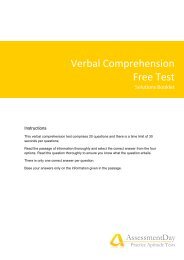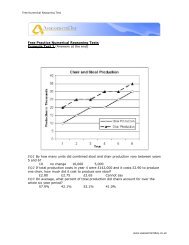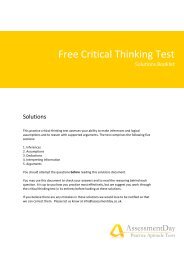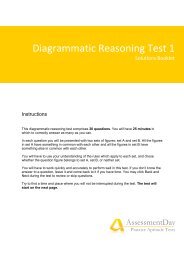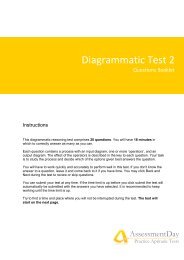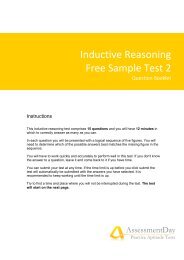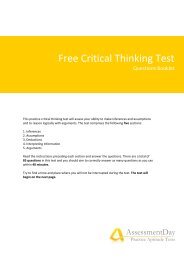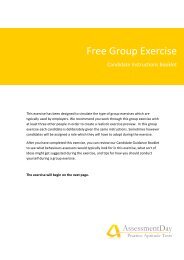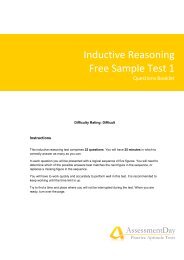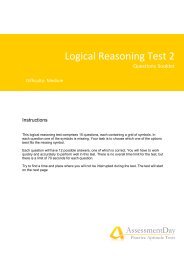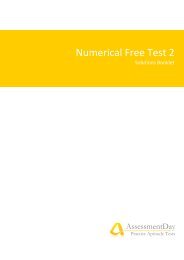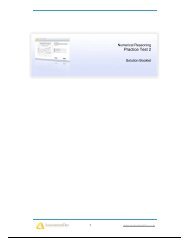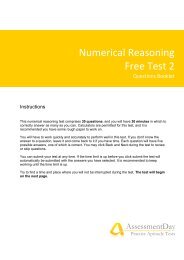Verbal Reasoning Test 1 Solutions (PDF) - Aptitude Test
Verbal Reasoning Test 1 Solutions (PDF) - Aptitude Test
Verbal Reasoning Test 1 Solutions (PDF) - Aptitude Test
Create successful ePaper yourself
Turn your PDF publications into a flip-book with our unique Google optimized e-Paper software.
Sodium chloride, or salt, is essential for human life. Typically derived from the<br />
evaporation of sea water or the mining of rock salt deposits, salt has been used by<br />
humans for thousands of years as a food seasoning and preservative. The mineral<br />
sodium is an electrolyte – an electrically-charged ion – that enables cells to carry<br />
electrical impulses to other cells, for example muscle contractions. Electrolytes<br />
also regulate the body’s fluid levels. A diet deficient in salt can cause muscle cramps,<br />
neurological problems and even death. Conversely, a diet high in salt leads to an<br />
increased risk of conditions such as hypertension, heart disease and stroke. In spite<br />
of high-profile campaigns to raise awareness, salt consumption has increased by<br />
50% in the past four decades, with the average adult ingesting more than double the<br />
amount of salt their body requires. Much of this increase can be attributed to the<br />
advent of frozen and processed foods in the mid-twentieth century. In the United<br />
States it is estimated that excessive salt consumption claims 150,000 lives and<br />
results in $24 billion of health care costs annually. For individuals wishing to<br />
reduce their sodium intake, the answer is not simply rejecting the salt shaker; 75% of<br />
the average person’s salt consumption comes from food,<br />
such as bread, cereals, and cheese.<br />
Q11. Humans primarily use salt for food flavouring and preservation.<br />
True False Cannot say<br />
Cannot Say – Though these are, indeed, two uses of salt as stated in the second sentence,<br />
we are not told whether these uses are the primary use of salt. As an aside, food use<br />
actually accounts for less than 20% of salt production.<br />
Q12. Most adults consume 50% more salt than their body requires.<br />
True False Cannot say<br />
Cannot Say – The passage tells us that “the average adult” ingests “more than double the<br />
amount of salt their body requires”. However we are not told how this average is distributed<br />
in order to say whether this statement is true or not. For example it could be possible that the<br />
average salt intake is skewed by a small proportion of adults. We cannot tell from the<br />
information given alone.<br />
You may share this document with others as long<br />
as you credit AssessmentDay.co.uk with a website<br />
link but you can’t change this document in any<br />
way or use its contents commercially.<br />
Page 6<br />
AssessmentDay<br />
www.assessmentday.co.uk<br />
Document last updated 05-07-2013



